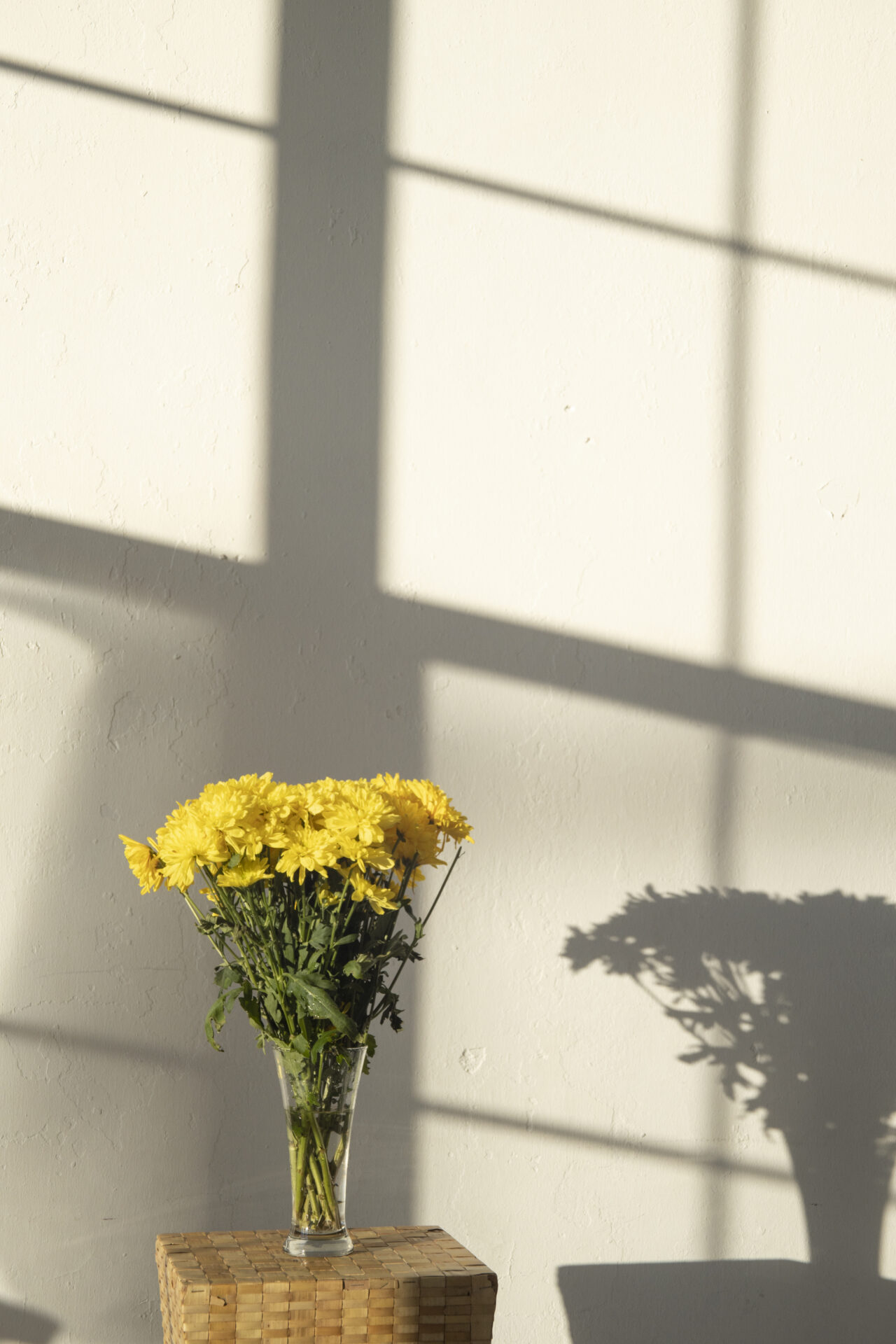Indoor vertical gardens have gained immense popularity recently, combining aesthetics with functionality to create a healthier living space. This article will explore the world of air-purifying plants and how they can be seamlessly integrated within indoor vertical gardens. We will discuss the benefits of these plants in improving indoor air quality and their growth requirements and share practical tips to help you design and maintain a thriving vertical garden. So, join us as we unravel the secrets to creating a visually stunning and environmentally beneficial living space that harnesses the natural power of air-purifying plants.
Choosing the Best Air Purifying Plants for Vertical Gardens
This subsection will delve into the various air-purifying plants that can thrive in vertical gardens, addressing their unique qualities and requirements. By selecting the right plants for your indoor vertical garden, you can create a beautiful, functional, and healthy space that benefits you and the environment.
Factors to Consider When Selecting Air Purifying Plants
When choosing plants for your indoor vertical garden, consider light requirements, humidity levels, and growth habits. This will help you create a harmonious garden that caters to each plant’s specific needs, ensuring their growth and air purifying capabilities are maximized.
Air Purifying Plants Suitable for Vertical Gardens
Below are some of the best air-purifying plants that can be incorporated into indoor vertical gardens:
1. English Ivy (Hedera helix): This versatile and hardy plant is known for removing multiple pollutants from the air, such as formaldehyde, benzene, and trichloroethylene. It requires moderate light and watering, making it an excellent choice for vertical gardens.
2. Spider Plant (Chlorophytum comosum): A low-maintenance option, spider plants effectively remove pollutants such as carbon monoxide, formaldehyde, and xylene. They thrive in bright, indirect light and require minimal watering.
3. Golden Pothos (Epipremnum aureum): This fast-growing vine can remove indoor air pollutants, including formaldehyde, xylene, and benzene. It is easy to care for and tolerates low light and infrequent watering.
4. Peace Lily (Spathiphyllum): Peace lilies remove multiple pollutants from the air and add a touch of elegance to your vertical garden. They thrive in low to medium light and require moderate watering.
5. Boston Fern (Nephrolepis exaltata): Boston ferns are highly efficient at removing formaldehyde, xylene, and toluene from the air. They prefer high humidity and indirect light, making them suitable for bathrooms or kitchens.
Designing Your Vertical Garden with Air Purifying Plants
When designing your indoor vertical garden, consider each plant’s growth habits and allocate adequate space for them to flourish. Trailing plants like English ivy and golden pothos create a cascading effect. In contrast, bushier plants like Boston ferns and peace lilies can fill the gaps to create a lush and visually appealing garden. Check out our Indoor Vertical Garden Ideas for Office Space article for more inspiration on designing indoor vertical gardens.
You can create a stunning, functional, and health-promoting indoor space by carefully curating a selection of air-purifying plants for your vertical garden. Consider each plant’s unique requirements and ensure it receives the appropriate care to maximize its air-purifying potential.
DIY Vertical Garden Structures for Air Purifying Plants
Creating a vertical garden for air-purifying plants at home can be a rewarding experience that allows you to explore your creativity while reaping the benefits of cleaner air. This subsection will discuss various DIY vertical garden structures suitable for housing air-purifying plants. We will cover a range of options, from simple and budget-friendly solutions to more elaborate and eye-catching designs. With these ideas, you can create a unique and functional indoor vertical garden that caters to your personal preferences and your chosen plants’ needs.
Repurposing Household Items for Vertical Gardens
One of the easiest ways to create a DIY vertical garden is by repurposing household items. This saves money and contributes to a more sustainable and eco-friendly lifestyle. Here are some ideas to get you started:
1. Shoe Organizers: Over-the-door shoe organizers with pockets can be easily transformed into vertical gardens. Fill the pockets with soil and plant your air-purifying plants directly into them. Be sure to choose a sturdy organizer made of breathable material, such as canvas or fabric.
2. Ladders: Old wooden or metal ladders can be repurposed as vertical garden structures by placing plants on each level. Add shelves to accommodate more plants and create a visually appealing display if necessary.
3. Pallets: Wooden pallets can be transformed into vertical gardens by adding a backing, such as landscape fabric, to hold the soil in place. Then, plant your air-purifying plants directly into the gaps between the slats.
Creating Custom Vertical Garden Structures
If you feel more ambitious, you can create custom vertical garden structures to house your air-purifying plants. Here are a few ideas to inspire your next DIY project:
1. Wall-mounted Planters: Craft a series of wall-mounted planters using wood, metal, or plastic. Arrange them in a grid or staggered pattern to create an attractive and functional vertical garden.
2. Hanging Gardens: Use ropes, chains, or wires to suspend multiple planters from the ceiling or wall. This creates a floating effect and maximizes vertical space for your air-purifying plants.
3. Freestanding Shelves: Build or purchase a freestanding shelving unit and dedicate each level to various air-purifying plants. This allows for easy rearrangement and provides ample room for plant growth.
Ensuring the Success of Your DIY Vertical Garden
Whichever DIY vertical garden structure you choose, it is crucial to consider the light, water, and air circulation requirements of your air-purifying plants. Ensure that your vertical garden is placed in an area with adequate light and ventilation and that the structure is strong enough to support the weight of the plants and soil. Regularly monitor plant health and adjust the care needed to maintain a thriving, air-cleansing vertical garden.
Explore these DIY vertical garden structures to create a personalized indoor oasis filled with air-purifying plants. Remember to consider the unique needs of your chosen plants and provide them with the necessary care to ensure the success of your vertical garden project.
Practical Indoor Vertical Garden Design Ideas
Creating an indoor vertical garden with air-purifying plants can be visually appealing and functionally beneficial. In this subsection, we will explore various design ideas that can enhance the aesthetics of your vertical garden while ensuring optimal growth and air-purifying capabilities for your chosen plants. These design ideas cater to different preferences, styles, and spaces, enabling you to create a unique and personalized indoor vertical garden tailored to your needs.
Maximize Space with Modular Systems
Modular vertical garden systems offer flexibility in design, allowing you to expand or reconfigure your garden quickly. These systems often feature interlocking panels or containers that can be mounted on walls or freestanding structures. By opting for a modular system, you can create a customized vertical garden that fits your space and accommodates the varying needs of your air-purifying plants.
Create Visual Interest with Layering and Texturing
Introduce visual interest and depth to your vertical garden by incorporating plants with different shapes, sizes, and textures. Combine trailing plants like English ivy with bushier specimens like Boston ferns for a dynamic and lush appearance. Additionally, consider using containers or planters with varying heights and materials to create a visually engaging display that showcases your air-purifying plants.
Integrate Art and Function with Living Wall Art
Transform your indoor vertical garden into art by arranging your air-purifying plants in a visually striking pattern or composition. This can be achieved by using colored or patterned containers or by strategically placing plants with contrasting foliage colors and shapes. Living wall art is a captivating focal point and provides the functional benefits of air purification.
Incorporate Light and Reflection with Mirrors
Incorporating mirrors into your indoor vertical garden design can help enhance the available light and create a sense of depth, making your space appear larger. Position mirrors behind or adjacent to your air-purifying plants to reflect light and brighten dimly lit areas. This not only improves the overall aesthetics of your vertical garden but also contributes to the health and growth of your plants.
Combine Functionality with Interior Design Themes
Design your indoor vertical garden to complement your space’s overall interior design theme. For instance, a minimalist design can be achieved using sleek, streamlined planters and focusing on a few key air-purifying plants with simple foliage. Meanwhile, a rustic or industrial-themed space can feature repurposed materials like wooden pallets or metal pipes as vertical garden structures. By integrating your garden design with your interior theme, you can create a cohesive and harmonious living space.
As you explore these design ideas, remember that the primary goal of your indoor vertical garden is to house and nurture your air-purifying plants. Therefore, each plant’s unique needs and requirements must always be considered to ensure optimal growth and air purifying capabilities. With careful planning and creativity, you can create a visually stunning and functionally beneficial indoor vertical garden that contributes to a healthier and more aesthetically pleasing living space.
Benefits of Air Purifying Plants in Indoor Vertical Gardens
Indoor vertical gardens featuring air-purifying plants offer many benefits, from improved air quality to enhanced aesthetics and well-being. This subsection will explore the advantages of incorporating air-purifying plants into your indoor vertical garden. By understanding the diverse benefits of these plants, you will be better equipped to create and maintain a flourishing vertical garden that promotes a healthier and more visually appealing indoor environment.
Purification of Indoor Air
One of the most significant benefits of air-purifying plants is their ability to remove harmful pollutants from the air. Through phytoremediation, these plants can absorb and neutralize toxins such as formaldehyde, benzene, and xylene, which are commonly found in indoor spaces. This results in cleaner and fresher air, contributing to a healthier living environment for you and your family.
Enhancement of Aesthetics
In addition to their air-cleansing properties, air-purifying plants can enhance your indoor space’s visual appeal. Vertical gardens featuring an array of lush and vibrant plants can serve as a captivating focal point, adding color, texture, and depth to your surroundings. Moreover, the unique design possibilities of vertical gardens allow you to personalize and transform your space according to your desired aesthetic.
Boosting Mental Health and Well-being
The presence of plants in indoor environments is linked to various psychological benefits, including reduced stress, improved mood, and increased concentration. Incorporating air-purifying plants into your vertical garden can create a calming and restorative space that promotes mental well-being. This can be particularly beneficial in urban settings, where access to green spaces is often limited.
Humidity Regulation and Temperature Control
Air-purifying plants can also help regulate indoor humidity and maintain a comfortable temperature. Through transpiration, plants release moisture into the air, mitigating the effects of dry indoor environments, particularly during colder months. Additionally, plants can absorb excess heat and help keep your space cooler during warmer months.
Creation of a Sustainable and Eco-friendly Space
Lastly, integrating air-purifying plants into your indoor vertical garden supports a more sustainable lifestyle by reducing reliance on energy-intensive air purifiers and climate control systems. Furthermore, repurposing household items or utilizing eco-friendly materials for your vertical garden structure can contribute to a greener and more environmentally responsible indoor space.
In summary, including air-purifying plants in your indoor vertical garden offers many benefits, from improved air quality and aesthetics to enhanced well-being and sustainability. By embracing the power of these plants, you can create a thriving, healthy, and visually stunning indoor environment that caters to the needs of both you and the planet.
Essential Care Tips for Thriving Air Purifying Plants
Maintaining the health and vitality of your air-purifying plants is crucial to ensure their optimal growth and air-cleansing capabilities. This section will discuss essential care tips that cater to the unique needs of these plants. By understanding and implementing these care practices, you can cultivate a flourishing vertical garden that purifies the air and enhances your indoor space’s overall aesthetics and well-being.
Meeting the Light Requirements of Your Plants
Each air purifying plant has unique light requirements, ranging from bright, indirect light to low light conditions. Identifying these needs and positioning your plants within the vertical garden is essential. Utilize natural or supplemental light sources, such as LED grow lights, to ensure each plant receives the appropriate light for optimal growth and air purification.
Watering Wisely: Balancing Moisture and Drainage
Proper watering is critical to the health and survival of your air-purifying plants. Overwatering can lead to root rot, while underwatering can cause wilting and stunted growth. Determine each plant’s water requirements and establish a consistent watering schedule accordingly. Additionally, ensure that your vertical garden containers or planters have adequate drainage to prevent waterlogging and maintain a healthy root system.
Maintaining Optimal Humidity Levels
Some air-purifying plants, such as Boston ferns and peace lilies, thrive in higher-humidity environments. To maintain the ideal humidity levels for these plants, consider placing them in naturally humid areas. Bathrooms or kitchens, or using a humidifier to create a more comfortable environment. For plants that prefer lower humidity, ensure proper air circulation within your vertical garden to prevent moisture accumulation.
Nourishing Your Plants with the Right Nutrients
Providing your air-purifying plants with the necessary nutrients is crucial for maintaining their health and air-cleansing capabilities. Use a well-balanced, slow-release fertilizer that caters to each plant’s needs. Be cautious not to over-fertilize, which can lead to excessive growth and reduced air purifying efficiency. Regularly monitor your plants for any signs of nutrient deficiency and adjust your fertilization practices.
Pruning and Grooming for Optimal Growth
Regular pruning and grooming of your plants maintain their appearance and promote healthy growth and air purification. Remove any dead or damaged leaves and trim back excessive growth to encourage bushier, more compact plants. Regular pruning can stimulate new growth for trailing plants like English ivy and golden pothos and create a more visually appealing vertical garden display.
Implementing these essential care tips can ensure the health and vitality of your air-purifying plants. Consistent attention to light, water, humidity, nutrition, and pruning practices will contribute to a thriving vertical garden. This garden will effectively purify the air and enhance the beauty and well-being of your indoor space.







Leave a reply